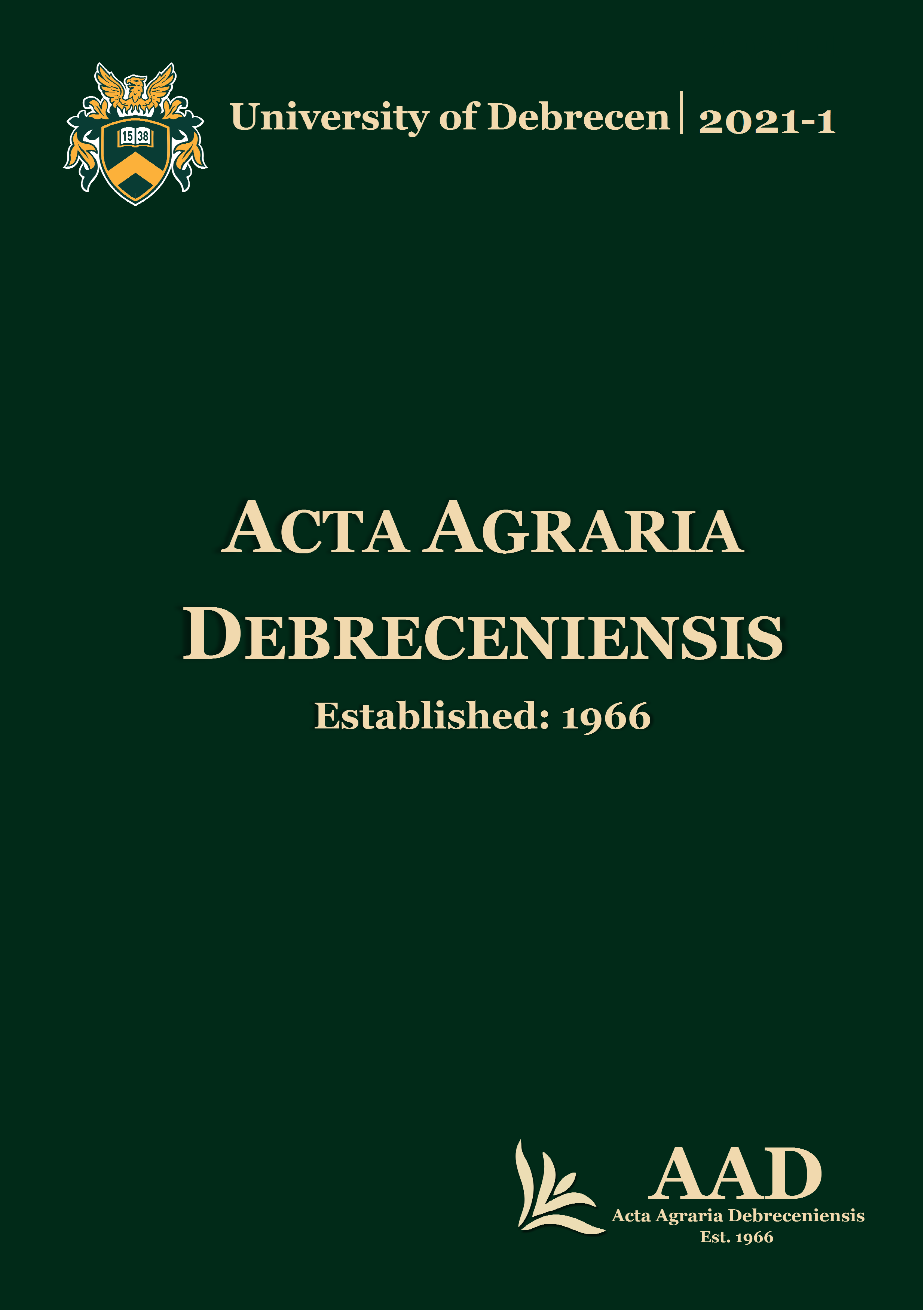Effect of different sources and doses of sulphur on yield, nutrient content and uptake by spring wheat
Authors
View
Keywords
License
Copyright (c) 2021 by the Author(s)

This work is licensed under a Creative Commons Attribution 4.0 International License.
How To Cite
Accepted 2021-02-15
Published 2021-06-01
Abstract
The objective of this study was to investigate the effect of two sulphur forms (sulphate and tiosulphate) in combination with three different N:S ratios on the yield of spring wheat and total N- and S-content and uptake by the aboveground biomass on chernozem and sandy soil. In the greenhouse experiment, the effects of two sulphur forms were compared: sulphate (SO42-) and thiosulphate (S2O32-). The sulphate was applied as potassium-sulphate (K2SO4) and thiosulphate as ammonium-thiosulphate ((NH4)2S2O3). Increasing doses of both sulphur forms (24, 60, 120 kg S ha-1) were used with the same nitrogen dose (120 kg N ha-1) which caused three different N:S ratios background (1:0.2, 1:0.5, 1:1). Nitrogen was supplied in the form of monoammonium-phosphate (MAP), ammonium-nitrate and ammonium-thiosulphate. Plant samples were taken in three different development stages of spring wheat based on the BBCH scale: at the stage of BBCH 30–32 (stem elongation), BBCH 65–69 (flowering) and BBCH 89 (ripening). The total nitrogen and total sulphur content of plant at different development stages and also wheat grain were measured by Elementar Vario EL type CNS analyser. The nutrient uptake by plant and grain was calculated from the yield of spring wheat and the N and S content of plant. The grain yield on chernozem soil ranged between 6.31 and 12.13 g/pot. All fertilised treatments significantly increased the grain yield compared to the control. The highest yield was obtained in the case of the application of 120 kg N ha-1 and 60 kg S ha-1in sulphate form. The grain yield on sandy soil varied from 2.53 to 6.62 g/pot. The fertilised treatments significantly enhanced the yield compared to the control. The highest yield was observed in the case of the application of 120 kg N ha-1 and 60 kg S ha-1 in thiosulphate form. On chernozem soil the increasing doses of sulphur (24, 60, 120 kg S ha-1) with the same N dose (120 kg N ha-1) increased the N-content of spring wheat at all development stages and in the grain. The treatments with different sulphur sources did not cause further changes in the N-content. On sandy soil in the most cases the N-content did not change significantly as a result of increasing sulphur doses. The treatments with sulphate form basically resulted higher nitrogen-content than treatments with thiosulphate form. The treatments with increasing sulphur doses resulted higher S-content on both of chernozem and sandy soil in the case of all development stage. Comparing the effect of the applied sulphur sources on the S-content it can be stated that at the stage of BBCH 30–31 and 65–69 the treatments with sulphate form resulted higher sulphur-content. At the stage of BBCH 89 there was no significant differences in S-content of grain as a result of different sulphur-sources.

 https://doi.org/10.34101/actaagrar/1/8499
https://doi.org/10.34101/actaagrar/1/8499